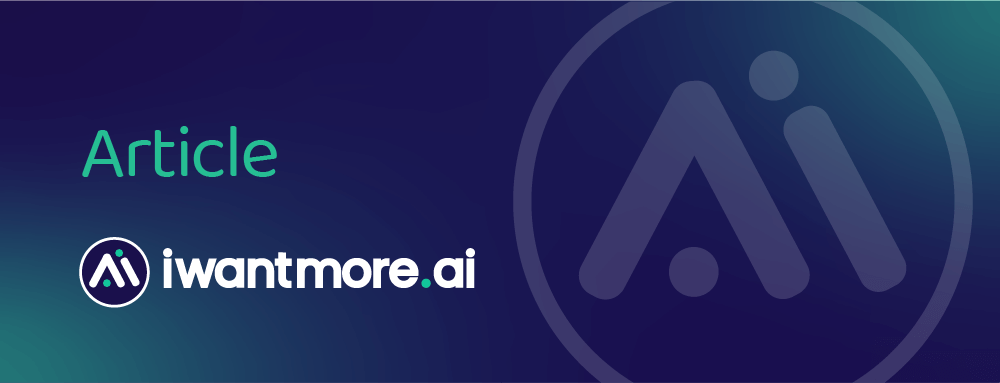
Do you need an AI leader for your business?
Imagine a £50 million turnover manufacturing firm that’s dabbled with creating a few AI agents, has a handful of proofs‑of‑concept on the go for some use cases, but no single person owning these AI projects.
The CTO is swamped with the day to day, the COO wants to see progress, the CFO wants to see hard ROI, and the CEO is reading headlines about competitors appointing ‘Chief AI Officers’ and is wondering why you don’t have one too. If this sounds familiar in your business, you might be wondering whether it’s time to create (or hire) a dedicated AI leader.
Why the question is coming up now
- The role is no longer niche – 14% of organisations already employ a Chief AI Officer (CAIO), and 40 % of those CAIOs report directly to the CEO
- It’s gaining momentum - Last year Gartner predicted that by 2025, 35 % of large enterprises will have a CAIO or equivalent in place. As a benchmark, nearly 50% of the FTSE 100 already have one.
- Boards want accountability – AI budgets are growing and shareholders want a single point of contact for AI projects i.e. someone to hound if things go wrong!
What exactly is an AI leader?
You may already have an AI council or AI steering group in place. This is a great first step. The AI leader takes this up a notch. It is the person who takes responsibility for actively focusing your scattered AI pilot projects to make sure they provide the greatest business impact. Titles vary from Chief AI Officer to Head of AI, but their remit typically covers:
- Strategy and use case management – Identifies where AI creates value, prioritises use cases, and kills vanity projects.
- Governance and risk – Owns responsible‑AI policies, navigates regulation, and manages risk.
- Delivery – Builds the platforms, pipelines, and talent that turns ideas into production.
- Culture and change – Upskills the workforce, champions AI literacy, and embeds AI into everyday work.
Five reasons you probably don’t need a full‑time CAIO (yet)
- Less than £10 m annual tech spend – you probably can’t justify another executive overhead just yet.
- Fewer than three significant AI pilots on the go – your experimentation is still too low level and ad‑hoc.
- Your data estate is all over the place – it makes sense to sort the mess out first.
- Operational risk is low – you’re not in regulated industries where AI mistakes are catastrophic.
- You already have a tech‑savvy exec – (often the CIO or COO) who can wear the AI hat for 12‑18 months while your AI roadmap matures.
Five reasons it’s now time to appoint an AI leader
- AI is integrated into your core products or customer experience – it’s revenue‑critical.
- Multiple business units are competing for budget – someone has to arbitrate.
- Regulatory or ethical stakes are high – think areas like health, finance, or HR.
- You’re hiring AI specialists faster than you can onboard them – talent strategy becomes urgent.
- Leadership is asking for enterprise‑wide KPIs on AI’s value – siloed reporting needs pulling together into something understandable.
If you have these conditions, a CAIO can bring much needed focus, governance and also a sense of urgency.
Not ready for a full‑time CAIO? There is always the fractional route
Start‑ups and mid‑market firms are increasingly hiring fractional AI officers . These are executives who split their time across several companies. For smaller businesses fractional leaders have an edge over full‑timers:
- They provide executive‑level expertise at around 30 - 50 % of the cost.
- It gives you immediate access to cross‑industry best practice.
- They are an objective outsider who can challenge legacy thinking.
Other viable models you could consider:
- An AI Council – a small cross‑functional steering group coached by external consultants (iwantmore.ai can help set up and work with your AI council on-going).
- Upskilled CIO/CDO - give an existing leader the mandate (and support) to double‑hat for a period (probably no more than 12 months).
- Project‑based advisory – engage a consulting partner (another gratuitous plug for iwantmore.ai) for strategy and early governance while internal capability grows.
Key considerations as you decide your next steps
- AI ownership matters – as adoption scales, running AI projects in an ad‑hoc fashion creates waste and risk.
- Focus on role clarity over job title – whether CAIO, Head of AI, or fractional leader, the title doesn’t matter. Define what they are accountable for first.
- Size and complexity drive the need – match your level of investment to AI’s strategic weight in your business.
- There’s a middle path – a fractional hire or AI council approach de‑risks the early stages and buys time to prove ROI.
Above all else, remember this as you make your decision. Gen AI only hit the mainstream a few years ago, so you won’t be getting a GenAI leader with 20 years of experience!
We are iwantmore.ai – an AI consulting firm that helps organisations uncover high‑impact use cases, design pragmatic AI roadmaps, and build the right leadership structures. If you’re weighing up whether (and how) to appoint an AI leader, contact us for a no‑obligation chat about the best fit for your stage of AI maturity.
Interested in more content like this? Sign up to our Newsletter here.
Other AI articles you may be interested in:

Governments across the world are racing to develop and deploy AI, but their approaches couldn’t be more different. The United States, China and the United Kingdom have all released formal action plans in 2025 that give us a clear sense of their priorities, politics and philosophies on AI. Here’s what they’re doing and what it tells us.

We say it to every business we meet. Regardless of the project, you can have the coolest, sexiest, best bit of tech out there, but without the people being on board it is a complete waste of time and money. Rolling out AI is no different. It’s about people. What’s the best way of bringing people along on any tech journey? Other people.

Artificial intelligence is hungry for energy. Behind every chatbot, Copilot, or agent are servers burning a lot of power. As more UK companies adopt AI tools, it's worth paying attention to how much energy those tools use and what that means for your sustainability targets and reporting requirements.

AI is no longer a future trend — it’s a present-day advantage. While some businesses are building AI agents and transforming operations, others risk falling behind. This article looks at what’s driving the AI divide, why foundational knowledge matters, and how even small steps can unlock real competitive value. If you’re standing still, you’re already losing ground.

It was only a year or two ago that the role of prompt engineer was being touted as the next great career path. Thousands of job ads appeared. People the world over updated their LinkedIn profiles to highlight their prompt engineering skills. Fast forward a couple of years and the role is already on its way out.

The CTO is swamped with the day to day, the COO wants to see progress, the CFO wants to see hard ROI, and the CEO is reading headlines about competitors appointing ‘Chief AI Officers’ and is wondering why you don’t have one too. If this sounds familiar in your business, you might be wondering whether it’s time to create (or hire) a dedicated AI leader.
iwantmore.ai – The AI consulting firm that helps you build a smarter business
Wherever you are with your AI implementation initiatives, we have a range of stand-alone AI quick start services to help you fast track the transformative benefits of AI across your business.



